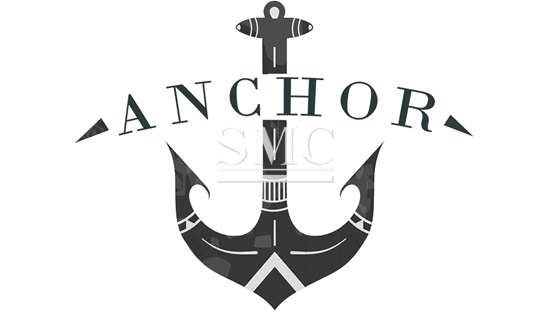There are many types of anchors, and large-grip anchors are commonly used on drilling platforms, as shown in Figure 1. The main feature of this kind of anchor is that its grip can only be guaranteed when the tension is horizontal. If the tension has a vertical component, the grip will be reduced and the anchor will be pulled out of the soil. Experiments show that the grip of the anchor handle turns 6° and the grip force begins to decrease, and the grip of the anchor handle turns 12° significantly. Therefore, when anchoring, the lower end of the anchor chain must be tangent to the sea floor; otherwise there is a danger of anchoring. To anchor, it is to use this feature, pull the chain upwards to lift the anchor, the anchor loses the grip, and finally breaks the ground.
The choice of anchor should be considered convenient, easy to store and economical, but the most important is the grip of the anchor. The grip of the anchor is not known at the same time because of the type of anchor, and on the other hand is related to the soil of the seabed. As marine development advances into deep water, new requirements are placed on anchoring. In deep water, if the lower end of the chain is still required to be tangent to the sea floor to ensure the grip of the anchor, the required chain is long. Therefore, it is necessary to study anchors that can withstand vertical component forces, such as cement weights or anchor piles. When encountering a lithologic seabed and failing to piling, a bored anchor pile can be used. Some anchors are designed according to the specific seabed, and the anchors work poorly when used under seabed conditions that do not meet the design requirements. Although there is a formula for calculating the grip force of various anchors in different seabed conditions, the true grip of the anchor needs to be determined through field tests.

Modern anchors are made of cast steel or forged steel. There are four main types.
Stock anchor: The anchor and the anchor are usually one piece and have a crossbar perpendicular to the plane of the anchor. There are many rod anchors, and some are single claws. When used, one claw bites into the soil and has a deep grip, but the grip is large, but because of the crossbar, the collection is inconvenient and is mostly used in small ships. The main types of rod anchors are naval anchors, single-claw anchors, Foshan anchors, and Japanese anchors.
Stockless anchor: the anchor claw and the anchor rod can be rotated relative to each other without a crossbar. When used, the two anchors are simultaneously inserted into the soil, which is convenient for anchoring and collecting, and is most widely used. Representative of the stockless anchors are Hall anchors and their modified Sbeck anchors.
High holding power anchors: the anchor claw is wide, can be rotated at a certain angle, and there is a protruding rod in the middle of the anchor head or anchor claw Body, for stability. Because the anchor claw has a large area and a large grip, it is suitable for sandy or soily water bottom. The main types of high-grip anchors are Danfoss anchors, Markov’s large claw anchors, and speedboat anchors.
Special anchor: the shape is different from the general anchor, such as the mushroom anchor, the anchor head is mushroom-like or umbrella-shaped, biting into the soil, the grip is large, difficult to move, and used for long-term anchoring and positioning, such as light boat, buoy Fixed anchors such as barges.
Shanghai Metal Corporation is a trusted aluminum alloy, aluminum foil price, stainless steel price and stainless steel manufacturer, kinds of stainless steel in china.
For our full list of products that we offer check out our website here. Be sure to join the conversation in our LinkedIn group, Facebook, and Twitter. Try also our WeChat by scanning the QR code below.
Annette X.//SMC Editor

Guest contributors are welcome at the Alloy Wiki.It is a weekly wiki and guide on alloy information and processing technology, while also about the vast array of opportunities that are present in manufacturing. Our team of writers consists of a Machining Material Supplier / Machinist / Tool and Die Maker, a Biomedical Engineer / Product Development Engineer, a Job Development Coordinator / Adjunct Professor, and a President and CEO of a manufacturing facility.
Link to this article:Types of Marine Anchors
Reprint Statement: If there are no special instructions, all articles on this site are original. Please indicate the source for reprinting:Alloy Wiki,thanks!^^


